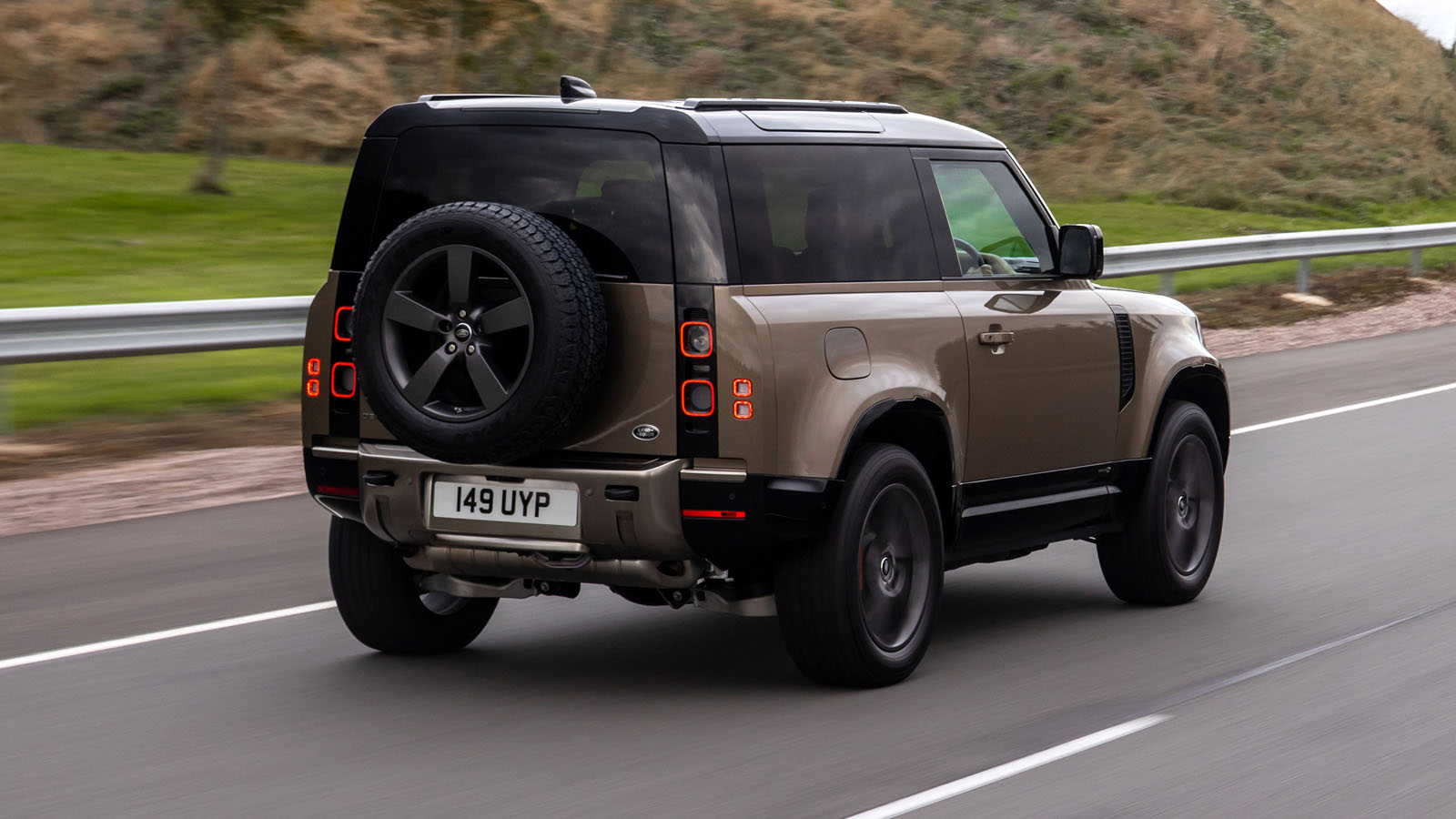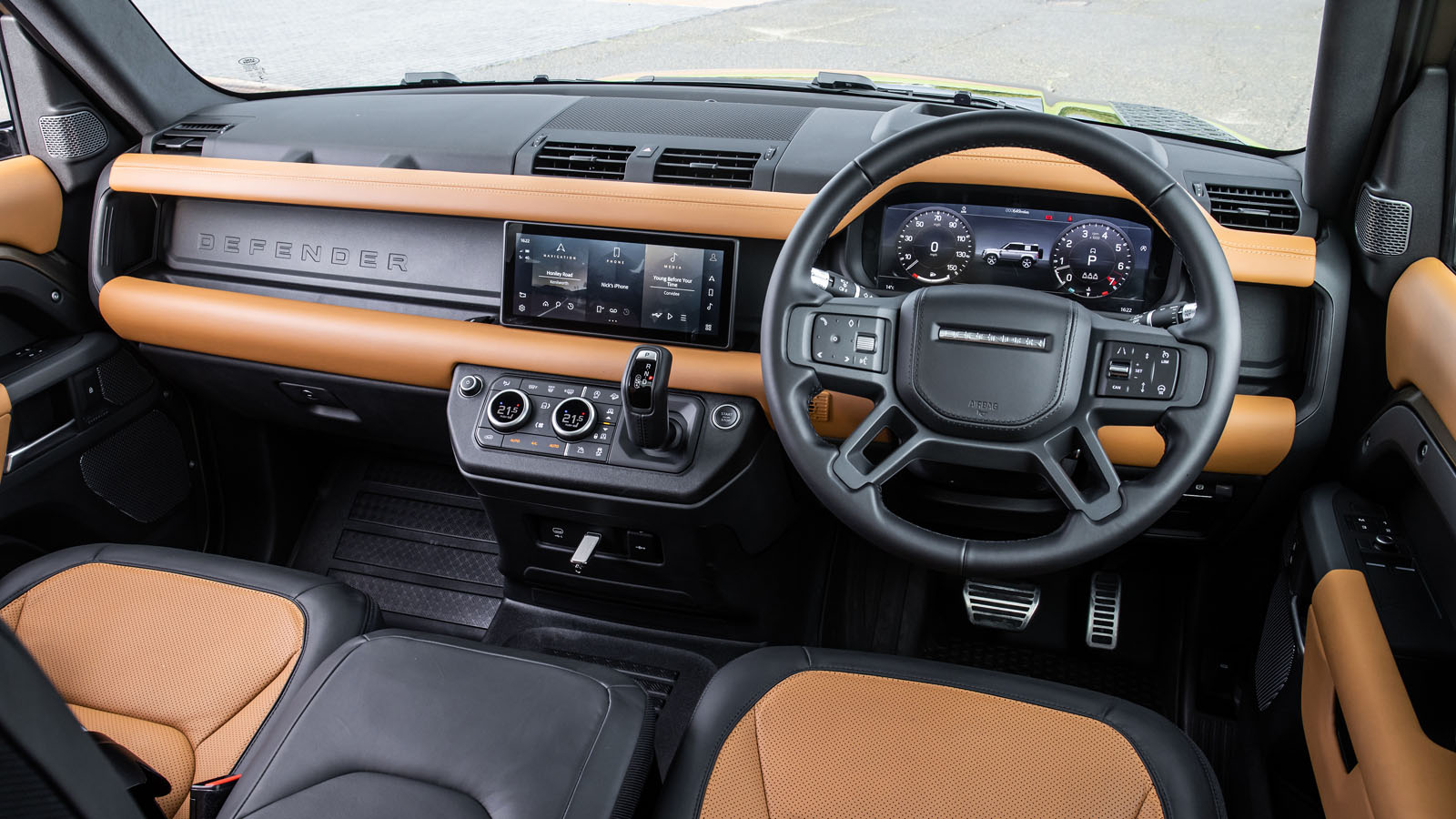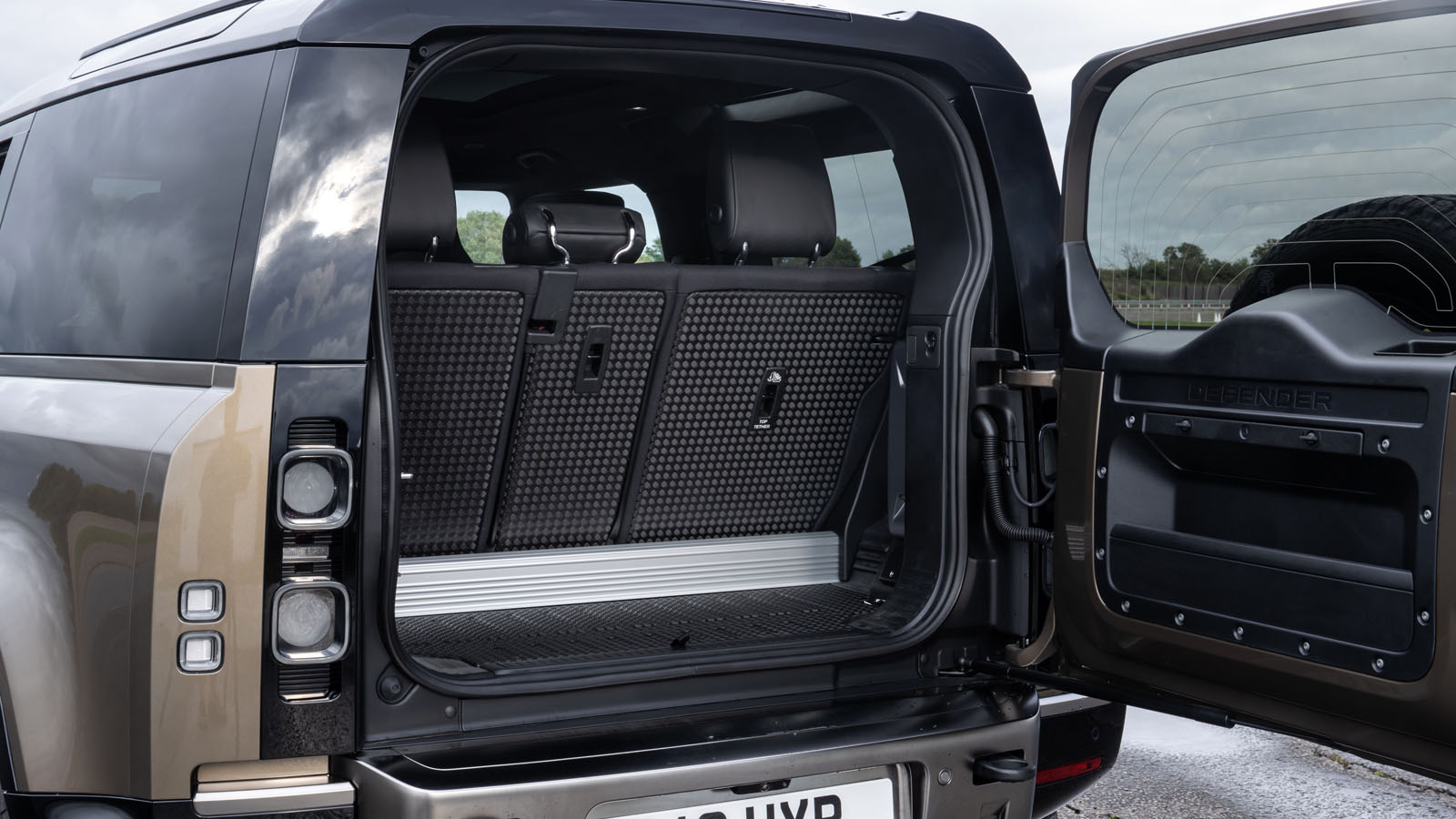Land Rover Defender 90
GOOD STUFF
Drives with none of your usual SWB-4×4 messiness. Insanely good off-road. Brilliant design
BAD STUFF
Pretty thirsty in real life
OVERVIEW
WHAT IS IT?
The new Defender had to overcome a deafening roar of opinion, both negative and positive, before even anyone had driven it. Upvotes from people who loved the design and the progressive engineering. Trolling from those who said it’s too posh to push: that it has fatally busted the rough’n’ready brief of the original.
But after a year on the road, the 110 proved its mettle, provided you don’t mind its size, and can afford it. So here comes the 90 version to spread the appeal. It can be had more cheaply, and at a lower spec, and it isn’t so bulky.

HOW MUCH SMALLER IS IT?
It’s 435mm shorter in the wheelbase, and overall length falls by the same amount. Less metal to haul along means it’s 100kg lighter, fractionally quicker accelerating, and cheaper. How much cheaper isn’t clear cut, but it looks like about £5,000 like-for-like. But actually the 90 comes with coil suspension and all 110s have self-levelling air springs and adaptive damping. Add that £1,615 chassis system to a 90 and the gap closes.
For 2021 in all Defenders, the four-cylinder diesels have been replaced by an enjoyable straight-six. Petrols are fours and a six. Company-car buyers will note the tax-saving plug-in hybrid, available with the 110, isn’t compatible with the shorter body.
WHAT ABOUT THE INSIDE?
The 90 has two rows of seats, but speccing the front central jump seat makes it a 5+1 seater and turns you into the most popular parent in the world. Apart from space in the back, the cabin design is the same as the 110. Which is fine. It’s smart but tough.
The exterior design is, we think, masterful too. The boxiness is just right for a hardcore SUV. It ekes out the maximum carrying space, and also helps when you’re driving between obstacles because you know where the bodywork begins and ends. The short overhangs help off-road. But it’s subtly curved, not flat sided. Flat panels look makeshift and go wavy.
Though it’s completely modern, the design does manage to evoke the old Defender. A vehicle that was very widely adored, for the exact same reasons it was almost impossible to justify buying. It was basically a tool. Its ability to survive harsh and brutal conditions meant it was, frankly, itself far too harsh and brutal to be taken seriously as an everyday vehicle for most people.
IS THIS NEW ONE STILL A PROPER UTILITY VEHICLE?
Well, all versions will happily tow 3,500kg. The whole bodyshell is immensely strong. So’s the suspension it rides on. It shares principles with the Discovery’s but few parts. Almost everything is stronger. Click these blue words to drink in the details of its capability and tech.
That’s the off-road part. On the road, short versions of hardcore 4x4s tend to pitch and wobble far more precariously than their longer counterparts. The long Defender 110 is a superb vehicle on the road. Can the short 90 match it?
WHAT IS THE VERDICT?
Very few buyers will make full use of all the Defender’s capabilities. In the meantime though it’s a family car with a deep and wide backstory. It just makes you feel adventurous. And when you do use its ability – as an off-roader, a snowy-roader, a towing roader – it’d feel immensely reassuring.
And the amazing thing is how well it drives. It’s stately and dignified and feels good.
Compared with the 110, the 90 is less cumbersome in towns, a bit more agile off-road, and a bit more characterful-looking. But it won’t swallow as many people or as much stuff, obviously.
We usually recommend 4WD estate cars over expensive crossovers, because there’s not much a crossover can do that an estate can’t. But the Defender isn’t a crossover and skittles that argument. If you can make use of it, there’s nothing to match it.
DRIVING
WHAT IS IT LIKE TO DRIVE?
The 90 isn’t significantly different on the road from the 110. And that’s a really good thing. The Defender doesn’t drive down a road like a hardcore off-roader. There’s none of the Jimny’s unruliness, the Wrangler’s vagueness, the Land Cruiser’s queasiness. Axles don’t shudder on the mountings and the body doesn’t quake on the chassis. Everything feels tied together.
Because of the long suspension travel, it’s soft and gentle in its reactions. Which is very different from the forced urgency of sporty SUVs, and much more honest and real-word sensible, really. It absorbs hard shocks, and the wheels don’t shudder over corrugated surfaces.
More remarkable, provided you drive smoothly, is its fine control of pitch and roll heave. And you can drive smoothly because the steering is progressive. So you can whisk it along a difficult road at a respectable lick and remarkable comfort. Almost luxury-car comfort. No really.
The six-cylinder diesel is far more refined than your typical clodhopping four. Depending on the trim, it comes in 200, 250 and 300-horse outputs, with between 369 and 479lb ft of torque. Really, that’s plenty. The base P200 engine is a four, but a reasonably refined one. You probably want the P400 six. Well you probably want the V8, but you don’t need it.
All are autos, and it’s a smooth box. All are mild-hybrid, which saves a bit of fuel and provides smooth and prompt start-stop in town.
It’s generally a quiet thing, the engine soft when it’s not worked hard, the tyre and suspension noise pretty distant. A roof rack and knobbly off-road tyres will add noise and drag, mind.

Overall then, it feels like a heavy luxury crossover. Then you turn off the road. Suddenly it’s a whole different machine.
Articulation, traction, wading, ascents, descents, side-slopes, mud, sand. It’s not just that it surmounts and traverses and dismisses all these obstacles, it’s the effortlessness that amazes you.
The 90’s shorter wheelbase versus the 110 is handy for snaking around trees and boulders. Even without the air-suspension to levitate the body in extreme circs, it’s amazing. Remember, ground clearance between the wheels is determined by the wishbones, and raising the air springs wouldn’t help that. Of course you don’t get the advantage of using air to increase your breakover, but in the SWB that angle is so insanely good anyway it’s seldom a worry.
The engine and autobox dispense torque gingerly when you need to ease across slippery mud, but with vim when you’re pointing up a precipitous slope. Traction is awesome. Clearance and articulation pretty colossal. Wading depth almost scary. Downhill control near-supernatural.
INTERIOR
WHAT IS IT LIKE ON THE INSIDE?
It’s a wonderful cabin, partly because it’s not like any other car’s.
Honest industrial design takes it far far away from your normal road-car atmosphere. The solid cross-dash beam, strong console, structural door liners and washable floor are all about fitness for purpose. Not having to fret about dirtying or marking ‘luxury’ materials is itself a bit of a luxury.



The infotainment electronics, HUD and driver aids are right up to modern premium-car standards.
The 90’s rear bench gives plenty of leg and headroom for adults, and the upper ‘alpine’ windows make it feel airy. But getting there is a palaver – you have to squeeze into a tight gap or have your patience tested as the front seats motor sluggishly forward.
The boot’s just under 400 litres, which is hardly enough for six active campers. If you have a lifestyle you’ll want to plunder Land Rover’s huge range of external carrying accessories – roof racks, ladders, panniers, clamps and the rest.
Space here doesn’t permit the listing of all the storage spaces, especially if you have the five-seat option and its warehouse-size centre console.

BUYING
WHAT SHOULD I BE PAYING?
Kick-off price for a five-seat 90 is a whisper around £45k, rising towards and beyond £100k for the V8.
But the main thing is residuals are high and so PCP/leasing costs pretty low – on that base model it’s £295 a month on a three-year PCP with £15k down. For comparison, on a Velar with the same sticker price, it’s £400 a month.
But you won’t buy a base-price vehicle because if a dealer can’t upsell you halfway into orbit he’s not worth his shiny suit. We won’t go into detail because we’d be here all day. Download the 50-page Defender price list if you don’t believe us.
None of them will be cheap to fuel. WLTP consumption is just better than 30mpg for the diesels (about 245g/km CO2) spec-dependent. The petrols are low-mid 20s mpg and 251-281g/km. Strangely, the six-cylinder P400 does slightly better than the four-cylinder P300.
You get a three-year warranty and the main service intervals are two years.
Source topgear.com


